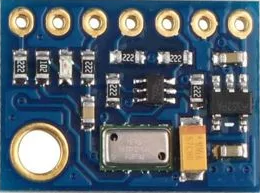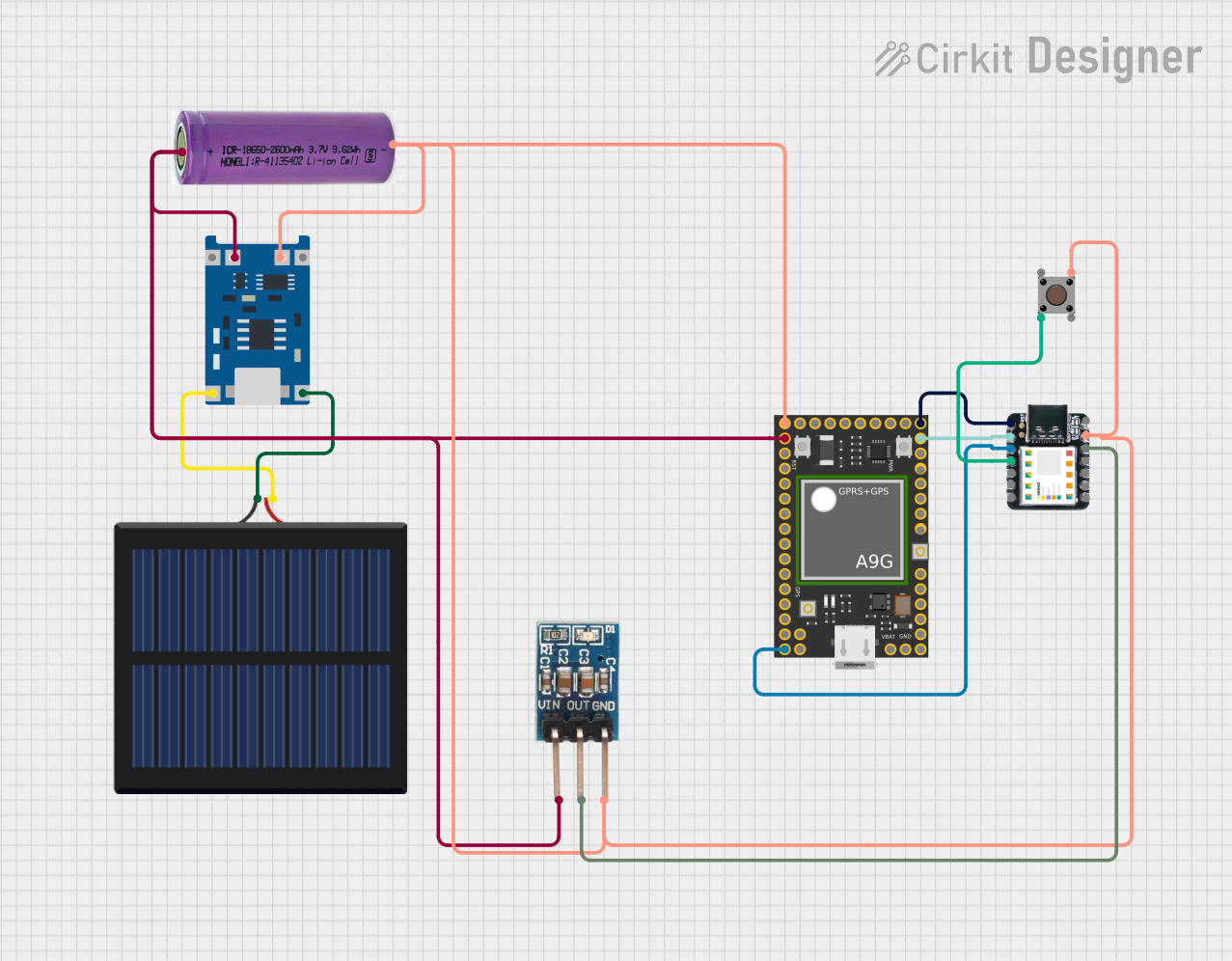
How to Use ms5611: Examples, Pinouts, and Specs

 Design with ms5611 in Cirkit Designer
Design with ms5611 in Cirkit DesignerIntroduction
The MS5611 is a high-resolution barometric pressure sensor designed for precise altitude and pressure measurements. It features a digital output interface, making it easy to integrate into various systems. The sensor is widely used in applications such as weather stations, drones, altimeters, and other devices requiring accurate environmental data. Its compact size and low power consumption make it ideal for portable and embedded systems.
Explore Projects Built with ms5611

 Open Project in Cirkit Designer
Open Project in Cirkit Designer
 Open Project in Cirkit Designer
Open Project in Cirkit Designer
 Open Project in Cirkit Designer
Open Project in Cirkit Designer
 Open Project in Cirkit Designer
Open Project in Cirkit DesignerExplore Projects Built with ms5611

 Open Project in Cirkit Designer
Open Project in Cirkit Designer
 Open Project in Cirkit Designer
Open Project in Cirkit Designer
 Open Project in Cirkit Designer
Open Project in Cirkit Designer
 Open Project in Cirkit Designer
Open Project in Cirkit DesignerTechnical Specifications
The MS5611 offers exceptional performance with the following key specifications:
- Pressure Range: 10 to 1200 mbar
- Resolution: Up to 0.012 mbar
- Operating Voltage: 1.8V to 3.6V
- Current Consumption: 1.25 µA (standby), 1.4 mA (active during conversion)
- Interface: I²C (up to 400 kHz) and SPI (up to 20 MHz)
- Operating Temperature Range: -40°C to +85°C
- Dimensions: 5.0 mm x 3.0 mm x 1.0 mm
Pin Configuration and Descriptions
The MS5611 has 6 pins, as described in the table below:
| Pin | Name | Description |
|---|---|---|
| 1 | VDD | Power supply input (1.8V to 3.6V) |
| 2 | GND | Ground connection |
| 3 | SCL/SPC | Serial clock line for I²C or SPI clock input |
| 4 | SDA/SDI/SDO | Data line for I²C or SPI data input/output |
| 5 | CSB | Chip select for SPI (active low); connect to VDD for I²C mode |
| 6 | PS | Protocol select: Connect to GND for SPI mode or VDD for I²C mode |
Usage Instructions
How to Use the MS5611 in a Circuit
- Power Supply: Connect the VDD pin to a 3.3V power source and the GND pin to ground.
- Protocol Selection:
- For I²C mode, connect the PS pin to VDD and the CSB pin to VDD.
- For SPI mode, connect the PS pin to GND and use the CSB pin as the chip select.
- Communication Interface:
- For I²C, connect the SCL and SDA pins to the corresponding I²C lines on your microcontroller.
- For SPI, connect the SPC (clock), SDI/SDO (data), and CSB (chip select) pins to the SPI lines on your microcontroller.
- Pull-Up Resistors: If using I²C, ensure pull-up resistors (typically 4.7 kΩ) are connected to the SCL and SDA lines.
- Bypass Capacitor: Place a 0.1 µF capacitor close to the VDD pin for noise filtering.
Important Considerations and Best Practices
- Ensure the operating voltage does not exceed 3.6V to avoid damaging the sensor.
- Use proper decoupling capacitors to minimize noise and improve stability.
- Avoid exposing the sensor to extreme environmental conditions beyond its specified range.
- Calibrate the sensor in your application for the most accurate results.
Example Code for Arduino UNO
Below is an example of how to interface the MS5611 with an Arduino UNO using the I²C protocol:
#include <Wire.h>
// MS5611 I2C address
#define MS5611_ADDRESS 0x77
// Function to read 16-bit data from the sensor
uint16_t read16(uint8_t reg) {
Wire.beginTransmission(MS5611_ADDRESS);
Wire.write(reg); // Send register address
Wire.endTransmission();
delay(10); // Wait for the sensor to process the request
Wire.requestFrom(MS5611_ADDRESS, 2); // Request 2 bytes of data
uint16_t value = (Wire.read() << 8) | Wire.read(); // Combine MSB and LSB
return value;
}
void setup() {
Wire.begin(); // Initialize I2C communication
Serial.begin(9600); // Start serial communication for debugging
Serial.println("MS5611 Sensor Initialization");
}
void loop() {
uint16_t pressure = read16(0x48); // Example register for pressure data
Serial.print("Pressure: ");
Serial.print(pressure);
Serial.println(" mbar");
delay(1000); // Wait 1 second before the next reading
}
Note: Replace 0x48 with the actual register address for pressure data as per the MS5611 datasheet.
Troubleshooting and FAQs
Common Issues and Solutions
No Data from the Sensor:
- Ensure the correct I²C or SPI address is used.
- Verify the wiring and connections, especially the pull-up resistors for I²C.
- Check the power supply voltage and ensure it is within the specified range.
Inaccurate Readings:
- Calibrate the sensor in your specific environment.
- Ensure the sensor is not exposed to rapid temperature changes or vibrations.
Communication Errors:
- Verify the protocol selection (I²C or SPI) and ensure the PS and CSB pins are configured correctly.
- Check for noise or interference on the communication lines.
FAQs
Q: Can the MS5611 measure altitude directly?
A: The MS5611 measures barometric pressure, which can be used to calculate altitude using standard atmospheric equations.
Q: What is the maximum I²C clock speed supported?
A: The MS5611 supports I²C clock speeds up to 400 kHz.
Q: Can the MS5611 operate at 5V?
A: No, the MS5611 operates at a maximum voltage of 3.6V. Use a voltage regulator or level shifter if interfacing with a 5V system.